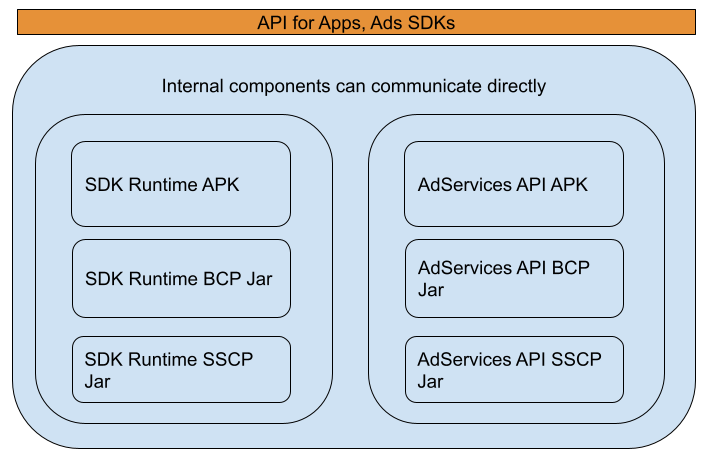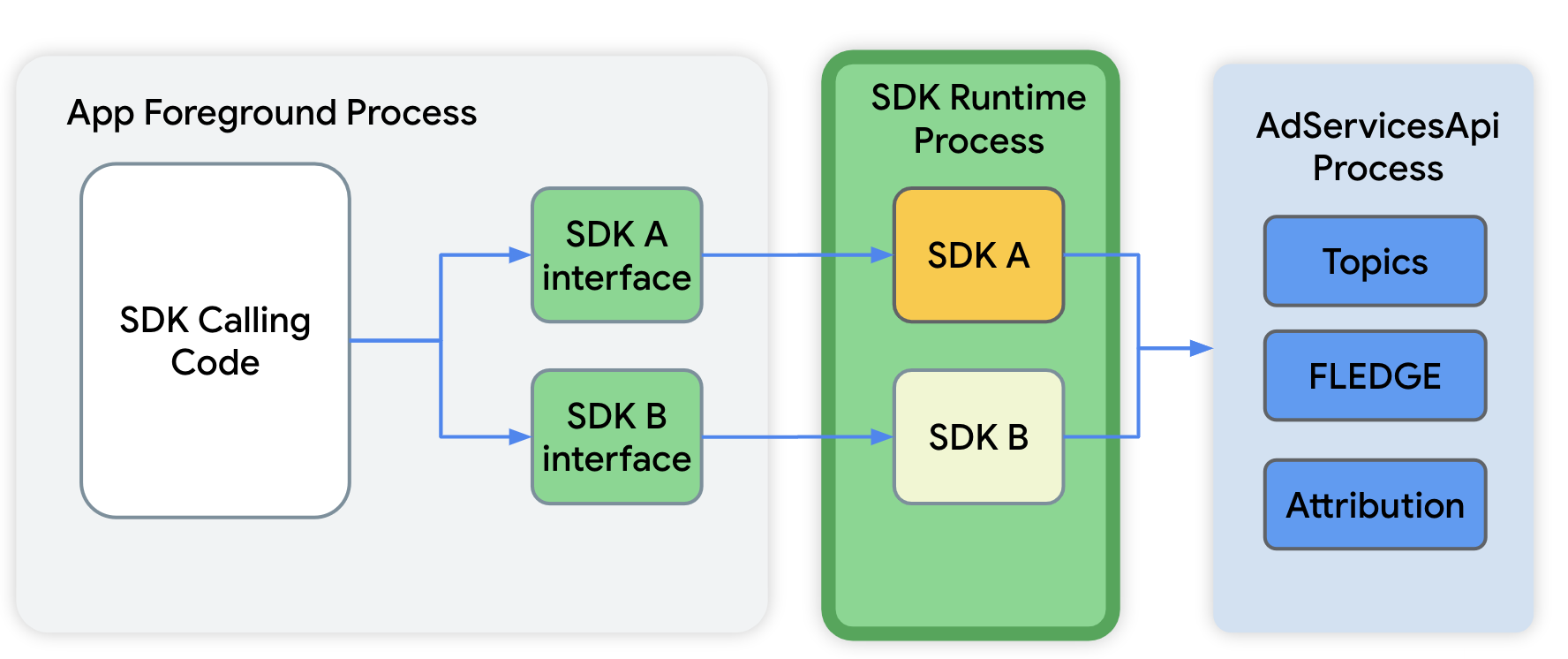Mô-đun AdServices (được giới thiệu trong Android 13) hỗ trợ sáng kiến Hộp cát về quyền riêng tư. Sáng kiến này có mục đích là tạo ra các công nghệ vừa bảo vệ quyền riêng tư của người dùng trên mạng, vừa cung cấp cho các công ty và nhà phát triển công cụ để xây dựng các doanh nghiệp kỹ thuật số vững mạnh.
Bạn có thể xem thêm thông tin trên trang web dành cho nhà phát triển Android.
Động lực
Mục tiêu của Sáng kiến Hộp cát về quyền riêng tư là:
- Xây dựng công nghệ mới nhằm bảo mật thông tin của người dùng
- Giúp các nhà xuất bản và nhà phát triển tiếp tục cung cấp nội dung miễn phí trên mạng
- Cộng tác với ngành để xây dựng các tiêu chuẩn mới về quyền riêng tư trên Internet
Ranh giới mô-đun
Cấu trúc AdServices: Đây là mã hoàn toàn mới, không có ranh giới mô-đun.
Vị trí mã: packages/modules/AdServices
Hình 1 minh hoạ chế độ thiết lập mô-đun AdServices.

Hình 1. Thiết kế API mô-đun AdServices

Hình 2. Thiết lập mô-đun AdServices
Định dạng gói
Chức năng chính của gói sẽ có trong APEX: com.google.android.adservices.
Chức năng Privacy Preserving API sẽ có trong APK com.google.android.adservices.api.
Chức năng Thời gian chạy SDK sẽ có trong APK com.google.android.app.sdksandbox.
Bạn có thể tìm hiểu thêm về AdServices trên các trang sau:
- Tổng quan về Hộp cát về quyền riêng tư
- Thiết kế thời gian chạy SDK
- Thiết kế chủ đề
- Thiết kế FLEDGE trên Android
- Thiết kế Báo cáo phân bổ
Phần phụ thuộc
- Miền sepolicy mới cho SDKSandbox
- Các hạn chế đối với SDKSandbox: hạn chế về bộ nhớ, ý định, thông báo truyền tin, v.v.
- Xác định rõ các quyền; SDK quảng cáo không kế thừa các quyền từ ứng dụng
- Các thay đổi về hệ điều hành để xử lý mã nhận dạng duy nhất của hộp cát

